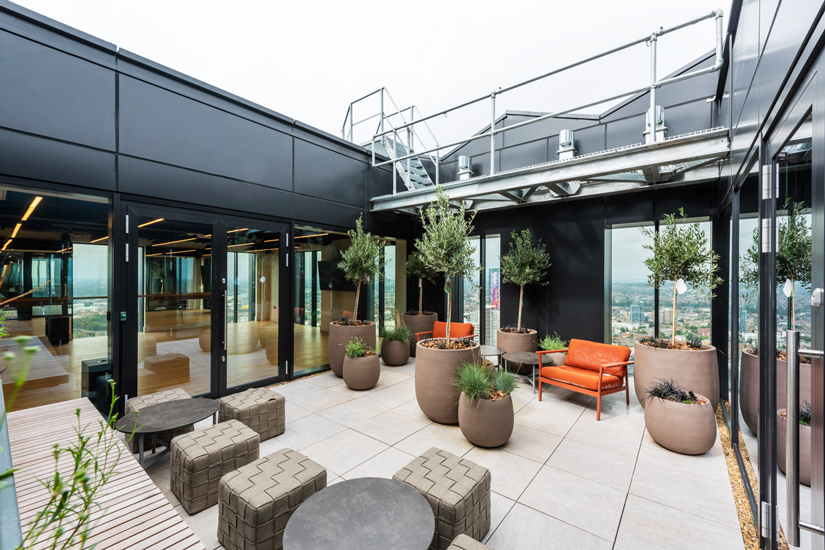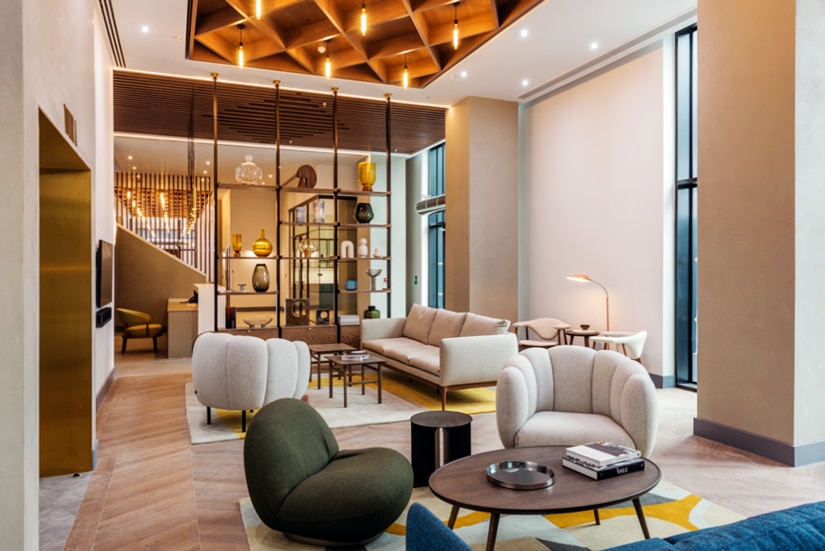|
Getting your Trinity Audio player ready...
|
As the managing director of global construction for Greystar Real Estate Partners, Andy Mest has spent enough time in the United Kingdom to pick up some British slang. One word in particular he finds amusing is “barmy,” which suggests something is eccentric at best. It’s an adjective that one might consider Mest’s latest project: the largest residential-led mixed-use development in England. The project will completely redefine how Londoners live, and while “barmy” is a bit extreme, the build-out is nothing short of unconventional for those accustomed to the traditional.

The construction director prefers another word to describe the project, which is now known as Greenford Quay. He calls it “ambitious.” When all is said and done, West London will have a vibrant waterfront neighborhood on a 20-acre parcel that until 2016 hosted only a shuttered factory and a neglected bakery.
Greenford Quay sits adjacent to Grand Union Canal and will eventually be home to 8 buildings; 2,118 new homes; 2,000 square-feet of commercial space; 5,000 people; and a school. Although the development would blend into most major American cities, its master plan raised some eyebrows in the British market, where multifamily projects are nearly unheard of.
Mest says Greystar created Greenford Quay after recognizing the changes in consumer behavior. “Londoners are looking for more affordable housing and communities where they can live, work, play, and interact . . . but the market wasn’t responding,” he explains. “We wanted to change that.”

To do so, the director started meeting with local and national leaders including Boris Johnson, who was London’s mayor at the time. Mest set out on a crusade to change ordinances, regulations, codes, and ultimately, minds. He promoted off-site construction methods that will increase speed and decrease noise pollution. He pointed to Greystar’s seven other modular projects in the UK. He mentioned his company’s expertise doing multifamily development in other countries. He talked about Greystar’s well-known investors. He advocated for creating a sense of community and a sense of place.
Greenford Quay is billed as an alternative to Central London, where renters typically settle for one small room in an owner-occupied house. After more than a year of meetings, the London Borough of Ealing awarded Greystar its planning consent in 2017.
With the approval in hand, Mest moved to execute on a master plan for a mini city beside Grand Union Canal. Greystar built a central square and canal bridge before delivering a first phase building known as Tillermans, which houses 379 studio, one-, two-, and three-bedroom apartments above ground floor retail space.

Tillermans showcases the strength of Greystar’s modular and sustainable methodologies. The use of cross-laminated timber in place of concrete coupled with off-site construction reduced carbon dioxide consumption by 26,000 metric tons.
Modular company Tide Construction used 3-D volumetric technology to pre-build the apartments, which arrive on site as boxes lacking only facades and finishes. Stacking finished boxes into place creates double walls, double floors, and double ceilings which Mest says improve acoustics and reduces noise complaints. “Modular construction is getting better and better. We get better quality in the factory and better performance in the field,” he explains. Another huge advantage is speed. Tide and Greystar completed Tillermans in just 14 months and most phases are delivered in half the time required for traditional building.
Seven other buildings surround Tillermans, including one commercial building, two for-sale blocks, a build-to-rent structure, two apartment buildings, and one discounted rent building reserved for nurses, teachers, and other service industry professionals.

Each structure has just one or two cores with long corridors. The design allows residents to move more freely and access ample and modern amenities like a pet spa, cinema room, workspace, and outdoor entertaining spaces. Residents can use onsite workstations, and wide hallways and shared community zones are designed to increase interaction. “People said we were crazy to sacrifice income producing units for public spaces, but we believe we are delivering an experience,” Mest says. “We are bringing services that were once out of reach to a new kind of living environment, and this is going to be transformative in the region.”
Perhaps it’s Mest’s willingness to push the limits that has sometimes caused others to refer to him as “crazy,” but it’s a badge he wears with pride. “Developers have the chance to be pioneers and really make a lasting impact by delivering something new, and that’s what we try to do,” he says. Mest first came to England for one meeting in 2014. That meeting led to 14 trips over 12 months before he moved his family to London in 2015.
Since then, he’s been helping Greystar realize the potential of modular construction. Mest, who was once a prefab skeptic, says his eyes were opened when a contractor leveraged modular to deliver a 616-unit, 12-story building in just 11 months despite adjacent train tracks and eroding soil.

Although Mest became a modular evangelist, front-loaded contracts and other financial challenges still suppressed his enthusiasm. That changed in 2017 when Mest found a way to forward-fund projects by working with modular providers who own raw ground. A year later, Greystar partnered with Henderson Park to build Ten Degrees in Croydon again with Tide. The residential complex features 546 apartments in twin towers of 38 and 44 stories, the latter of which is the world’s tallest modular tower.
Greystar’s leadership team has taken notice of Mest’s performance on these important projects. “Andy is a passionate thought leader in the construction industry,” says John W. Jones, CRH Americas Inc.’s executive vice president of global strategic accounts and building solutions. “He challenges you in a positive manner to think outside the box and come up with innovative and sustainable solutions.” In 2020, Jones and other senior leaders asked Mest to establish Greystar’s first off-site construction business. In doing so, he’ll help take the company to even greater heights.


